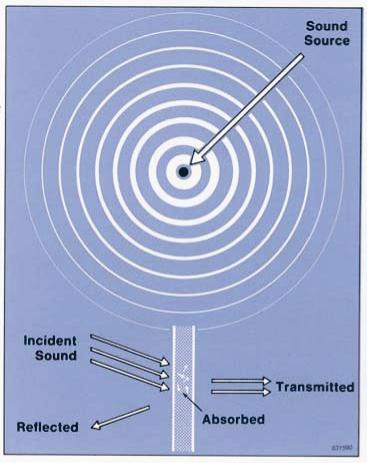|
Sound propagation in air can be compared to ripples on a pond. The ripples spread out uniformly in all directions, decreasing in amplitude as they move further from the source. For sound in air, when the distance doubles, the amplitude drops by half -- which is a drop of 6 dB. Thus, if you are at a position one meter from the source and move one meter further away from the source, the sound pressure level will drop by 6 dB. If you move to 4 meters, it will drop by 12 dB, 8 meters by 18 dB, and so on. However, this is only true when there are no reflecting or blocking objects in the sound path. Such ideal conditions are termed free-field conditions. With an obstacle in the sound path, part of the sound will be reflected, part absorbed and the remainder will be transmitted through the object. How much sound is reflected, absorbed or transmitted depends on the properties of the object, its size and the wavelength of the sound. In general, the object must be larger than one wavelength in order to significantly disturb the sound. For example, at 10 kHz the wavelength is 3,4cm -- so even a small object such as a measurement microphone will disturb the sound field -- hence sound absorption and insulation are readily achieved. But, at 100 Hz, the wavelength is 3,4 meters and sound insulation becomes much more difficult. You've probably noticed this with music playing in the room next door. It is the bass which is very difficult to block out. (from Bruel & Kjar) |
|



